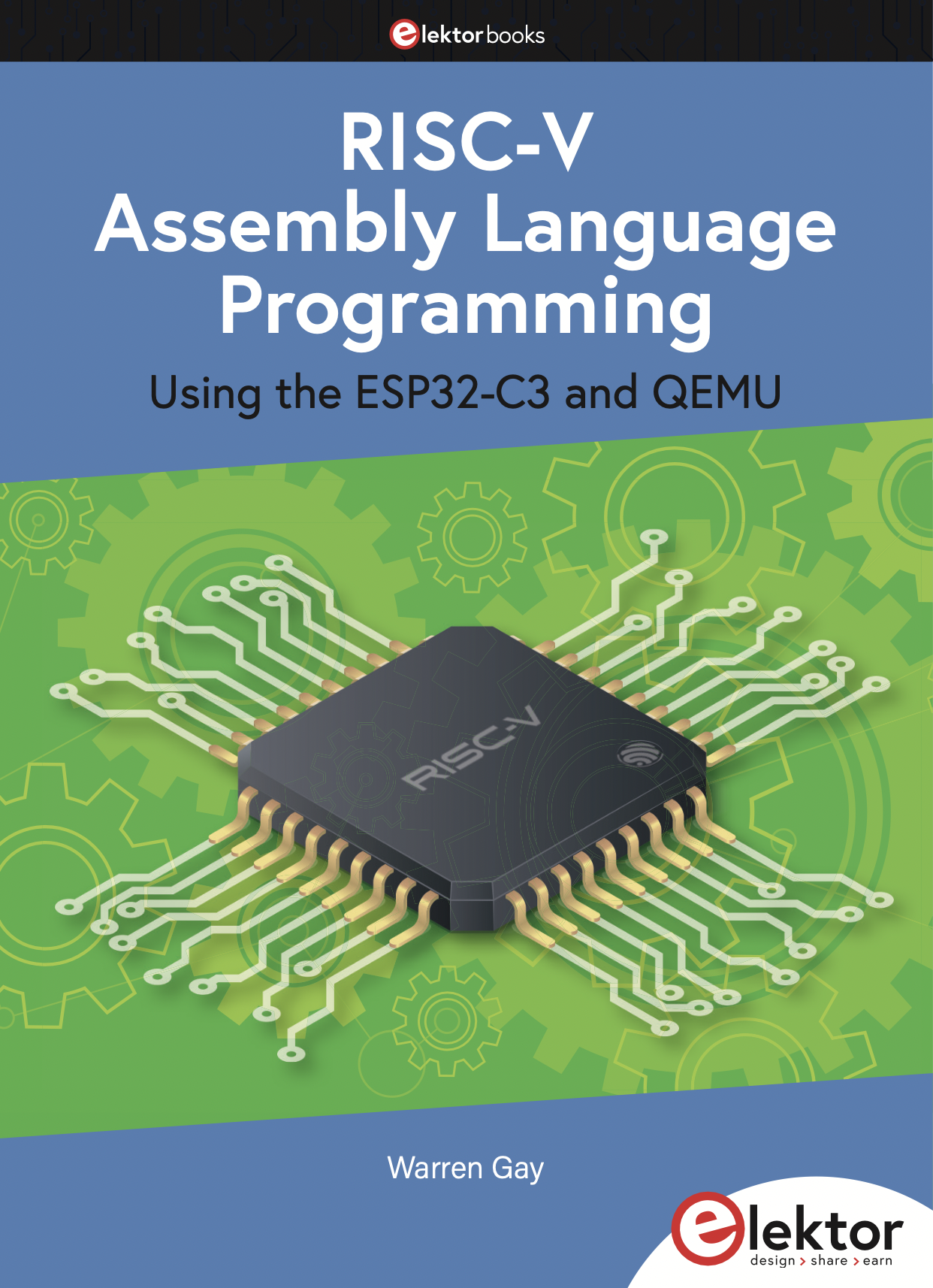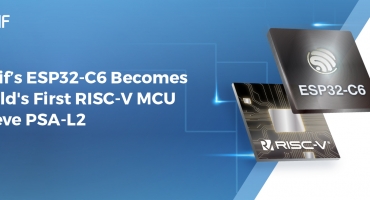- Home
- Hardware
- SDKs
- Cloud
- Solutions
- Support
- Ecosystem
- Company
- Contact
news
Get Hands-On Experience with RISC-V, Using ESP32-C3!
Reporting from Shanghai, China
Dec 30, 2022
Warren Gay’s new book explains how to use ESP32-C3 in order to program in RISC-V assembly language.
Warren Gay has written a book entitled RISC-V Assembly Language Programming, Using the ESP32-C3 and QEMU, which has just been published by Elektor. Warren Gay is a datablocks.net senior software developer, writing Linus Internet servers in C++. He got involved with electronics at an early age, and since then he has built microcomputers and has worked with MC86HC705, AVR, STM32, ESP32 and ARM computers, among several others.
With the availability of free and open-source C/C++ C compilers nowadays, readers might wonder why someone would be interested in assembler language. What is so compelling about the RISC-V Instruction Set Architecture (ISA)? How does RISC-V offer from existing architectures? And most importantly, how do we gain experience with the RISC-V without a major investment? Is there any affordable hardware available?
The availability of Espressif’s ESP32-C3 provides a way to get hands-on experience with RISC-V. ESP32-C3 is a single-core Wi-Fi and Bluetooth 5 (LE) microcontroller SoC, based on the open-source RISC-V architecture. It strikes the right balance of power, I/O capabilities and security, thus offering the optimal cost-effective solution for connected devices. The availability of Wi-Fi and Bluetooth 5 (LE) connectivity not only makes the device’s configuration easy, but it also facilitates a variety of use cases based on dual connectivity. Furthermore, the open-sourced QEMU emulator adds a 64-bit experience in RISC-V under Linux. These are just two ways for students and enthusiasts alike to explore RISC-V in this book.

The projects in Warren Gay’s book are boiled down to bare essentials, for the purpose of keeping the assembly language concepts clear and simple. This way, readers are bound to have “aha!” moments and not puzzle about difficult use cases. In this book, the focus is on learning how to write RISC-V assembly language code, without getting bogged down in detail. As readers work their way through this learning process, they will build up small demonstration programs that they will be able to run and test. Oftentimes, the result is a number of simple printed messages that prove a concept. Once they have mastered these basic concepts, they will be well equipped to apply assembly language in larger projects.
As part of our New Year's giveaway for 2023, Espressif and Elektor are offering books and ESP32-C3 boards to five lucky readers who will:
- like our relevant promotional posts on Instagram, Facebook, and LinkedIn;
- follow @espressif and @elektor on the above-mentioned social media;
- and repost our promotional photo, using the following hashtag #riscvbookesp32.
The five lucky winners will emerge from a prize draw. The results will be announced on our social media. So, stay tuned!
-
2025.03.10Recently, some media have reported on a press release initially calling out ESP32 chips for having a “backdoor”. Espressif would like to take this opportunity to clarify this matter for our users and partners.
-
2025.03.10Espressif has released ESP32-H2 v1.2, bringing significant cryptographic and hardware security improvements.
-
2025.03.06This milestone makes the ESP32-C6 the first RISC-V-based product to attain this level of security certification, underscoring Espressif’s commitment to delivering robust, secure, and reliable IoT solutions.
 LinkedIn
LinkedIn 微信
微信
 Twitter
Twitter Facebook
Facebook


